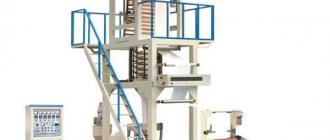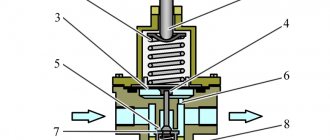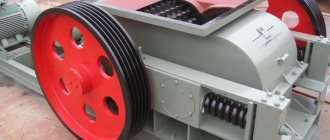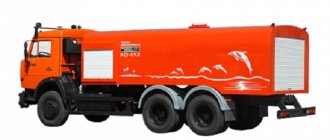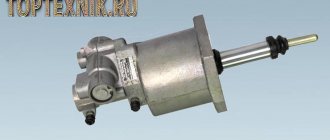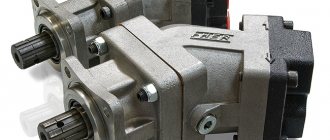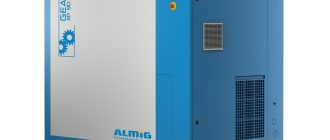If you are looking for refrigeration units for your car, this article is for you!
BELOW IS MY PERSONAL EXPERIENCE
I tell you in detail how to choose a refrigerator for a car, what are the subtleties, how much does a refrigerated installation cost, which brands are the best (in my opinion)
Having many years of experience in successfully working at refrigerator service stations, I will share my knowledge about the types of installations and the principle of their operation. I’ll tell you about the main brands and the cost of units. I will advise you on how to choose the right model wisely.
A refrigerator is a specialized cargo transport equipped for transporting goods that require special temperature conditions.
Automotive refrigerators consist of a thermally insulated van and a refrigeration unit. Monitoring and control of operating modes is usually located in the driver’s cabin.
Refrigeration units can be installed in closed bodies of various vehicles, as well as in trailers or semi-trailers.
To maintain a uniform temperature of the transported goods, air must circulate freely throughout the body.
The functions of the refrigerator do not include freezing food. According to transportation standards, transported goods must first be frozen or cooled to the required temperature. The task of a refrigerator is to maintain the temperature and humidity conditions necessary for transporting specific goods.
In this article I will talk about the types of automobile refrigerators, the principle of their operation and the features of choosing suitable models.
Figure 1. Car refrigerator.
Application area
Refrigeration units have significantly expanded the possibilities of transporting perishable goods, both within cities and over long distances.
They are used to transport goods that require certain temperature conditions:
- chilled and frozen meat and fish;
- frozen and fresh vegetables and fruits;
- milk and dairy products;
- medicines and vaccines;
- frozen semi-finished products;
- fresh flowers and seedlings;
- some chemicals.
Refrigerators are capable of maintaining temperatures from minus twenty to plus twelve degrees, depending on the required temperature conditions for certain goods.
They are indispensable for enterprises producing and processing goods with a limited shelf life, located at considerable distances from places of storage and consumption.
CargoCash offers
On the CargoCash Safe Transportation Platform you can quickly find a contractor to deliver cargo by refrigerated truck of the required carrying capacity, cargo compartment volume, and temperature conditions.
You will discuss all the details of the trip by directly contacting the selected counterparty. Registration on the site provides additional opportunities, including registration of a “Safe Transaction”, product insurance, obtaining information about an unlimited number of counterparties, publishing reviews and others. + Create an order Become a carrier
Classification of refrigerators
Refrigerated vehicles are classified according to the requirements set by the European Community.
The class of refrigeration units depends on their power and the temperature inside the empty van, which must remain unchanged for at least 12 hours, regardless of the ambient temperature.
Refrigerators are divided into the following classes:
- A – maintains temperature from +12⁰C to 0⁰C;
- B – with temperatures ranging from +12⁰C and -10⁰C
- C – between +12⁰C and -20⁰C;
- D – no more than +2⁰C;
- E – less than -10⁰C;
- F – less than -20⁰C.
Each group of goods has certain requirements for temperature conditions of transportation.
Class “A” is used for transporting medicines, flowers, fruits, vegetables, and dairy products.
Class “B” is suitable for transporting chilled fish, meat and dairy products.
Class “C” can be used both for the transportation of refrigerated goods and deep-frozen products.
Class "D" - for flowers, medicines or dairy products.
Classes “E” and “F” are used for the transportation of frozen products only.
Table of temperature conditions for various food products
| Name of product | Temperature, °C |
| Fresh meat | +1…-1 |
| Chilled meat | -1…-10 |
| Deep frozen meat | -17…-23 |
| Sausage products | 0…-1 |
| Ice cream | -18…-23 |
| Frozen fish | -23…-28 |
| Fresh fish | 0…-2 |
| Butter, cheese, eggs | 0…+1 |
| Vegetables | +17…-23 |
Construction of car vans
The main requirements for refrigerated vans are thermal insulation of the walls, ceiling and floor of the body.
Basically, modern vans are made of special sandwich panels, about ten centimeters thick, securely fastened together with special fasteners. The doors are sealed with elastic sealing gaskets made of rubberized material.
When constructing frame vans, the wooden or metal base of the frame is sheathed on the outside with galvanized steel sheets or stainless steel. The inside can be laminated plywood, galvanized with a polymer coating, plastic or aluminum. The space between the sheathing layers is filled with foam-forming, slab or roll insulating material, 8-12 centimeters thick.
Thermal insulation of refrigerators must meet environmental safety requirements and have the following qualities:
- light weight;
- moisture resistance;
- low density;
- fire resistance;
- high strength;
- durability;
- low thermal conductivity.
I advice! Use polystyrene foam as insulation. It meets all the necessary requirements and is the cheapest insulation material. The main thing is to tightly fill and foam the joints between the sheets so that cold bridges do not form.
The van can be installed on car chassis, trailers or semi-trailers.
Figure 2. Insulated car van.
Frame
Refrigerated container bodies come in different sizes: 10 feet, 20 feet, 40 feet and 45 feet. You can read about the features of these sizes in our article Dimensions and dimensions of a refrigerated container
It is important to know.
It is important to understand that the structure of the hull can vary greatly, based on the dimensions of the refrigerated container, manufacturer and year of manufacture.
What is the body made of?
For example, let's take the most popular size - 40 feet. The container body consists of a supporting frame (vertical and horizontal corner beams) at the corners of which there are fittings (eyelets for loading and unloading the container) and transverse floor beams.
Walls
The wall of a refrigerated container is a sandwich made of polyurethane foam panels (100 mm thick) with an outer covering of stainless steel 2-3 mm thick (since 2000) or “riveted” aluminum (before 2000). The internal coating also consists of stainless steel (shiny walls) or aluminum (white walls), 1 mm thick.
Internal borders. They are also called reinforced sides. In some buildings, refrigerated containers were made to order from the shipping line. They are designed to avoid “swelling” of the housing walls. This occurs when a loaded reefer container is placed on the ground. As a result of the pressure of the load, the body inflates. If you use the refrigerator as a stationary refrigerator and do not move it loaded, then you will not see any special advantages of this modification.
Floor
A metal sheet 0.6 cm thick is installed on the cross beams of the supporting frame. Next comes 10 cm thick foam. 3 cm plywood. And a durable T-shaped aluminum profile that can easily withstand a regularly operating loader with goods.
In a 45ft refrigerated container the floor is flat.
Ceiling
The ceiling is the same sandwich, 15 cm thick. 35-grade foam is used. The inner surface is aluminum (white color) or stainless steel (shiny ceiling). The outside is made of stainless steel.
Doors
The doors are made of the same multi-layer panels as the walls and ceiling of the building. The doors swing open to an angle of 270°, which ensures convenient loading and unloading of products. The thickness of the sandwich is 10 cm. 50th foam is used. The inner side is made of stainless steel. The outer side is often made of aluminum. Less commonly made of stainless steel. There is rubber sealing at the end of the doors. Also, the doors are equipped with special latches that allow the cargo compartment of the refrigerator to be hermetically sealed.
It is important to know.
The doors of a refrigerated container are one of its most important parts. It is extremely important to ensure that the doors and rubber bands are maintained. The number of profiles is several hundred, which makes replacement almost impossible. Repairing this element is extremely difficult. It is very useful to watch our video on how to care for them
Additional elements.
Hanging paths (hooks) for meat carcasses.
This add-on is produced separately. It is not available in the factory version.
PVC curtains on the door.
Must be purchased separately. We highly recommend purchasing them, as they allow you to avoid sudden changes in temperature (internal and external) if you are actively loading or unloading goods into a container. You can purchase from us by following this link
The principle of operation of refrigerators
Refrigeration equipment can be combined into a single monoblock, or the evaporator and condenser can be installed separately. Typically the evaporator is located at the top of the front of the body, and the condenser is placed outside on the front of the van or the roof.
The required temperature is maintained thanks to freon circulating in a closed circuit. In one cycle, freon, passing through all components of the system, passes from gaseous to liquid state and back.
Cooling of the van occurs as follows:
- Freon, passing through the suction valve into the compressor, is compressed and passes from a gaseous state to a liquid. In this case, the temperature rises to 130 degrees.
- Through the outlet valve, liquid freon moves into the condenser, releasing a large amount of heat into the environment.
- Passing from the condenser to the receiver, liquid freon is cleared of moisture and impurities and enters the evaporator through a thermostatic valve.
- Thanks to the large evaporator tank, the pressure drops and the freon boils, absorbing heat from the van.
- When the temperature of freon changes, it turns into gas and is again supplied to the compressor through the suction valve, after which the cycle is repeated.
The refrigeration unit operates on the principle of a household refrigerator and is highly efficient.
Such systems can be operated at any outdoor temperature, from -40⁰C to + 40⁰C and provide both “heat” and “cold” modes.
Types of installations
Types of installations may vary in location, tonnage and volume of the van, and type of drive.
By location
Roof . Models of rooftop refrigerators are usually produced in the form of monoblocks of small thickness and streamlined shape, to preserve the aerodynamic properties of the vehicle. For the convenience of monitoring and adjusting the temperature parameters inside the car, the control unit is located in the driver's cabin.
The advantages of rooftop refrigerators are compact placement, low energy consumption and the ability to operate from a car engine or from the network.
Figure 3. Global Freeze rooftop refrigerator.
Advice! Since the cooling capacity of rooftop units is small, I recommend using them in small, well-insulated vans, no more than 38 cubic meters in volume.
Frontal
When placed frontally, the monoblock or condenser of the refrigeration unit is removed through the technological window and placed on the front wall of the body. The evaporator is located from the inside at the top, in the front part of the body.
Figure 4. Front placement of refrigeration equipment.
For semi-trailer
Refrigeration units in semi-trailers are usually located at the front or under the body.
The most suitable autonomous models for multi-ton semi-trailers are the UNO or DFZ series from the Italian company Zanotti with frontal placement.
I advice! Use only self-contained units with a diesel engine for semi-trailers, and be sure to have spare engines in stock in case of emergencies.
Refrigerated semi-trailers are especially popular in Russia for transporting perishable and frozen goods over long distances.
Figure 5. Front placement of refrigeration equipment on a semi-trailer.
By tonnage and van volume
The volume of the van and the carrying capacity of the vehicle are the main indicators when choosing a refrigerator
Vehicles of any size and carrying capacity can be equipped with refrigeration units.
Small vehicles with a carrying capacity of up to 1.5 tons and a van volume of up to 12 m3 are designed for transporting goods with different temperature conditions within populated areas. Compact mobile refrigerators are capable of quickly delivering goods to retail outlets, even in difficult traffic situations.
Medium vehicles with a volume of 15 - 20 m3, with a load capacity of up to 5 tons, are suitable for transporting chilled and frozen products within cities and between neighboring settlements.
Large vans for commercial vehicles, with a carrying capacity of up to 15 tons, and a van volume of up to 60 m3, are best used for intercity transportation.
Refrigerators for semi-trailers with a carrying capacity of 15 to 40 tons, with a van volume of up to 80 m3, are necessary for transporting large volumes of frozen goods over long distances.
By drive type
an autonomous connection from an independent diesel engine when transporting goods over long distances in heavy vehicles with a volume of more than 30 m3.
Cooling of cargo occurs regardless of the operation of the car engine.
I advice! Pay attention to the advantages of such a connection, since in the event of a car breakdown, the cargo will remain intact. In addition, there is no need to operate the vehicle in parking lots or during overnight stays.
Connection from a car engine via a belt drive is suitable for transportation over short distances, within a populated area. In this case, it is better to use cooling equipment of low power.
Units with their own integrated compressor operate from the vehicle's generator Suitable for light-duty vehicles with a van up to five cubic meters. I would recommend using the electric drive of a car when connecting spare units while repairing the main engine or parking the car.
Eutectic systems are used when transporting products in urban environments, where van doors often have to be opened for short periods of time. Such conditions may occur when delivering ice cream, frozen fruits and vegetables, meat or fish to retail outlets.
Eutectic plates are flat structures - cold accumulators filled with saline solution. Inside the plate there is a refrigeration line filled with refrigerant, which connects the eutectic plates to the condenser unit. When the unit is turned on, the slabs freeze to a temperature below thirty degrees.
The first charge requires freezing for about 12 hours. For subsequent periods, eight hours is enough. Frozen slabs cool the volume of the van, maintaining a constant temperature below -20⁰C.
The number of eutectic plates depends on the volume of the van.
Figure 6. Refrigerator with eutectic cooling system.
I advice! Choose models with eutectic plates for delivering ice cream to retail outlets
Sensor types
Each type of installation is characterized by separate types of pressure sensors, the installation and operation of which also differ. For example, in heat-cold equipment, sensors are mounted together with the compressor control circuit and turn off the refrigerator in case of emergency pressure. Sensors installed in “cold” type installations are connected to the control unit, while the system itself turns off when the emergency pressure is reached, and its shutdown is accompanied by the operation of an emergency sign.
Turning off the ignition of the car engine preserves the “cold” mode of the refrigerator if it is necessary to preserve it when unloading the body. If cooling is no longer required, the unit is switched off by pressing a special button.
The technologies used in the design of refrigerators, as well as durable and lightweight materials, make it possible to reduce the weight of the entire installation, while increasing its load capacity while maintaining the strength of the body and its thermal insulation properties. In order to secure the transported goods during transportation, special nets and fastenings can be installed inside the refrigerator.
Review of major brands and prices
The BAYAR company offers a wide range of refrigeration equipment from the world's largest manufacturers for any vehicle.
Main brands I would recommend:
1. Refrigerators from the South Korean company Young JIN Transcooler are easy to operate and suitable for any mode of transportation of goods.
Equipped with copper radiators with a special anti-corrosion coating and reliable Japanese compressors. Components from German Danfoss or South Korean manufacturers ensure uninterrupted operation and long service life.
They are characterized by low maintenance costs and cheap spare parts.
The cost of models with direct drive is from 175 to 330 thousand rubles with installation. The cost of autonomous models is from 840 to 1050 thousand rubles.
Figure 7.
Refrigerator Transcooler.
2. HWA SUNG THERMO is the first South Korean manufacturer of equipment for various automotive vehicles.
It is easy to choose the equipment that suits your requirements, thanks to the wide range of models presented. There are installations with their own diesel engines designed for trailers and semi-trailers with a volume of up to 86 m3 and equipment for small and medium-sized vehicles.
The cost of installations for small commercial vehicles is from 125.5 to 164 thousand rubles, for medium vehicles - from 160.65 to 443.7 thousand rubles. Refrigerators for semi-trailers and large vehicles cost from 841.5 to 1156.68 thousand rubles.
Figure 8.
Refrigerator H-Thermo
.
3. The Chinese company KINGTEC presents a wide range of models for different temperature conditions, operating only in cold, or heat and cold in the temperature range from +6⁰С to -20⁰С. There are refrigerators driven by an engine or operating autonomously, from an independent diesel engine or from a 220-380 Volt network.
Models of K series refrigerators with small-sized evaporators are offered at prices from 87 to 890 thousand rubles.
“S” series units with two compressors (from electric motors and car engines) are presented at prices ranging from 155 to 420 thousand rubles.
Rooftop models with two compressors for cars with a carrying capacity of 1.5 tons are represented by four models, costing from 98 to 130 thousand rubles.
The quality of KingTec equipment is confirmed by the international quality certificate ISO 9001-2001
Figure 9.
Refrigeration units KingTec
.
4. Zanotti refrigerators from the Italian manufacturer are serious competitors to Chinese and South Korean units.
The range includes models with autonomous drive, engine drive and electric drive for vehicles of various carrying capacities. Zanotti equipment is distinguished by high quality, reliability and long service life. The environmentally friendly freon R404A is used as a refrigerant. Ideally suited for Russian climate conditions and operates reliably at outdoor temperatures in the range of +45⁰С - -45⁰С.
As a dealer, we supply various series of models at manufacturer prices.
Installations for vehicles with a carrying capacity of up to 1.5 tons can be purchased at a price of 170 - 250 thousand rubles. For medium and heavy-duty vehicles - models of different series from 330 to 1140 thousand rubles.
Figure 10.
Condenser, evaporators and control panel of the Zanotti installation
.
5. Alex Original - refrigerators from the oldest Israeli company, which have gained worldwide fame due to their high reliability, ease of installation and maintenance, and affordable cost.
Alex Original units are lightweight and compact in size. I would recommend an autonomous rooftop model for small cars TR-1000 R-404a - 12V-24V, priced at 120 thousand rubles.
It works only in cold weather and provides temperatures of 0⁰С - up to 15m3, -10⁰С - up to 13m3, -20⁰С - up to 9m3. The company's assortment includes models with standby compressors operating only in cold temperatures down to -20 ⁰C, from the engine and from the network:
- TRW21240 Stand-by R-404a - 230v for vehicles with a carrying capacity of up to one and a half tons with the following indicators: 0⁰С - up to 18 m3, -10⁰С - up to 16 m3, -20⁰С - up to 11 m3, at a price of 225 thousand rubles, with installation.
- TRW31440 Stand-by R-404a - 230v for machines with a load capacity of up to five tons with the characteristics: 0⁰С - up to 26 m3, -10⁰С - up to 20 m3, -20⁰С - up to 16 m3, at a cost with installation of 255 thousand rubles.
Figure 11.
Refrigeration units
" Alex Original" .
6. Refrigerated trucks of the Vyuga brand, Russian-Korean assembly, low price category are distinguished by high reliability and quality due to the use of components from the world's best manufacturers and advanced Russian and European technologies.
The cost of various models of the Vyuga brand varies from 80 to 170 thousand rubles.
Figure 12.
Refrigeration units "Vyuga"
.
Recommendations! I would advise small business owners to choose Vyuga installations for transporting small volumes of goods within populated areas.
7. Refrigerated trucks of the American corporation Thermo King are leaders in the production of refrigeration equipment.
Termoking refrigerators are produced in various series for vehicles of various carrying capacities:
- “B” series units are distinguished by a very thin ceiling evaporator, without taking up much space in the van, they are presented in models for light vehicles, with a load capacity of up to one and a half tons. Model B-100-10, priced at 147 thousand rubles, works only with cold from the battery. Model B-100-20 is presented at a price of 171 thousand rubles, works in cold temperatures down to -20⁰C, from a battery and a 220/380V network.
- Refrigerators of the “C” series of a simple design with a minimum number of connections are presented in three models, operating only in cold temperatures down to 0⁰C, for small and medium-sized vehicles, at a cost with installation from 87.5 to 136 thousand rubles. The Ce series units have the highest cooling capacity in their class. They are represented by a wide range of models with different operating modes for machines with a carrying capacity from 5 to 15 tons. Model prices vary from 98.5 to 217 thousand rubles.
- Refrigerators of the “V” series, with temperature control using DirectSmart Reefer microprocessor controllers, are represented by a wide range of models. The most interesting of them is V-800 MAX 50, for heavy-duty vehicles, works on heat and cold, with operation from the engine and from a 380V network with operating temperatures of 0⁰С - up to 54 m3 and -20⁰С - up to 42 m3 costs 534.5 thousand rubles with installation .
Figure 13.
Refrigeration units "Thermoking"
.
8. Arctic Russian refrigerated trucks for transporting goods with cooling temperatures down to -20 are characterized by high cooling capacity, compact size and low cost. The control system has a self-diagnosis function.
The Arctic line of units includes roof-mounted and front-mounted models with cooling capacity from 1600 to 3650 W, here are some of them:
- ArcticS-V with a van volume of 12 m3 - transportation temperature -20⁰С, at a price including installation of 110 thousand rubles;
- ArcticM-V (Cold - Hot) with a volume of 22 m3 - transportation temperature from +10⁰С to -10⁰С, price 130 thousand rubles;
- ArcticL-V with a volume of 36 m3 -0⁰С, costing 135 thousand rubles;
- ArcticXL-V (Cold - Hot) with a volume of 50 m3 - from 0⁰С to +5⁰С, costing 170 thousand rubles.
Figure 14.
Refrigeration unit "Arctic"
.
Rating of popular models of refrigeration units
| Trademark | Manufacturer country | fame | durability, reliability | price (thousand rubles) | rating |
| Young Jin Transcooler | South Korea | — | + | 175 – 1050 | 5/5 |
| Hwa Sung Thermo | South Korea | + | + | 125 – 1156,68 | 5/5 |
| Thermal Master | South Korea | — | — | 92 – 232 | 3/5 |
| KingTec | China | — | — | 87 – 890 | 3/5 |
| Zanotti | Italy | + | + | 170 – 1140 | 5/5 |
| Alex Original | Israel | + | — | 110 – 255 | 4/5 |
| Snowstorm | Russia | — | + | 80 – 170 | 4/5 |
| Thermo King | USA | + | + | 87,5 – 534,5 | 4/5 |
| Arctic | Russia | + | + | 110 – 170 | 5/5 |
Best choice price/quality
Rime R 1900
| Operating mode: | Warm-cold |
153,000 rub.
Rime R 2400 M MULTI
| Operating mode: | Cold |
RUB 332,000
Rime R 21 Eco NEW
| Operating mode: | Warm-cold |
120,000 rub.
Rime R 4000 L
| Operating mode: | Maintenance |
RUB 331,000
REF 100s
| Operating mode: | Cold |
95,000 rub.
REF 600s
| Operating mode: | Cold |
155,000 rub.
300х/хт
| Operating mode: | Warm-cold |
155,000 rub.
REF 500х/хт
| Operating mode: | Warm-cold |
190,000 rub.
We also recommend:
VIENTO 200 R404A
| Operating mode: | Warm-cold |
123,000 rub.
VIENTO 350 R404A
| Operating mode: | Cold |
180,000 rub.
XARIOS 500
| Operating mode: | Warm-cold |
RUB 222,000
Xarios 600
| Operating mode: | Maintenance |
RUB 263,000
Similar refrigerators
TerraFrigo A 10
| Operating mode: | +4°С |
90,000 rub.
TerraFrigo S 10
| Operating mode: | 0°С, -20°С |
135,000 rub.
TerraFrigo S 40
| Operating mode: | 0°С, -20°С |
185,000 rub.
TerraFrigo SP 10
| Operating mode: | -20°С, +18°С |
150,000 rub.



